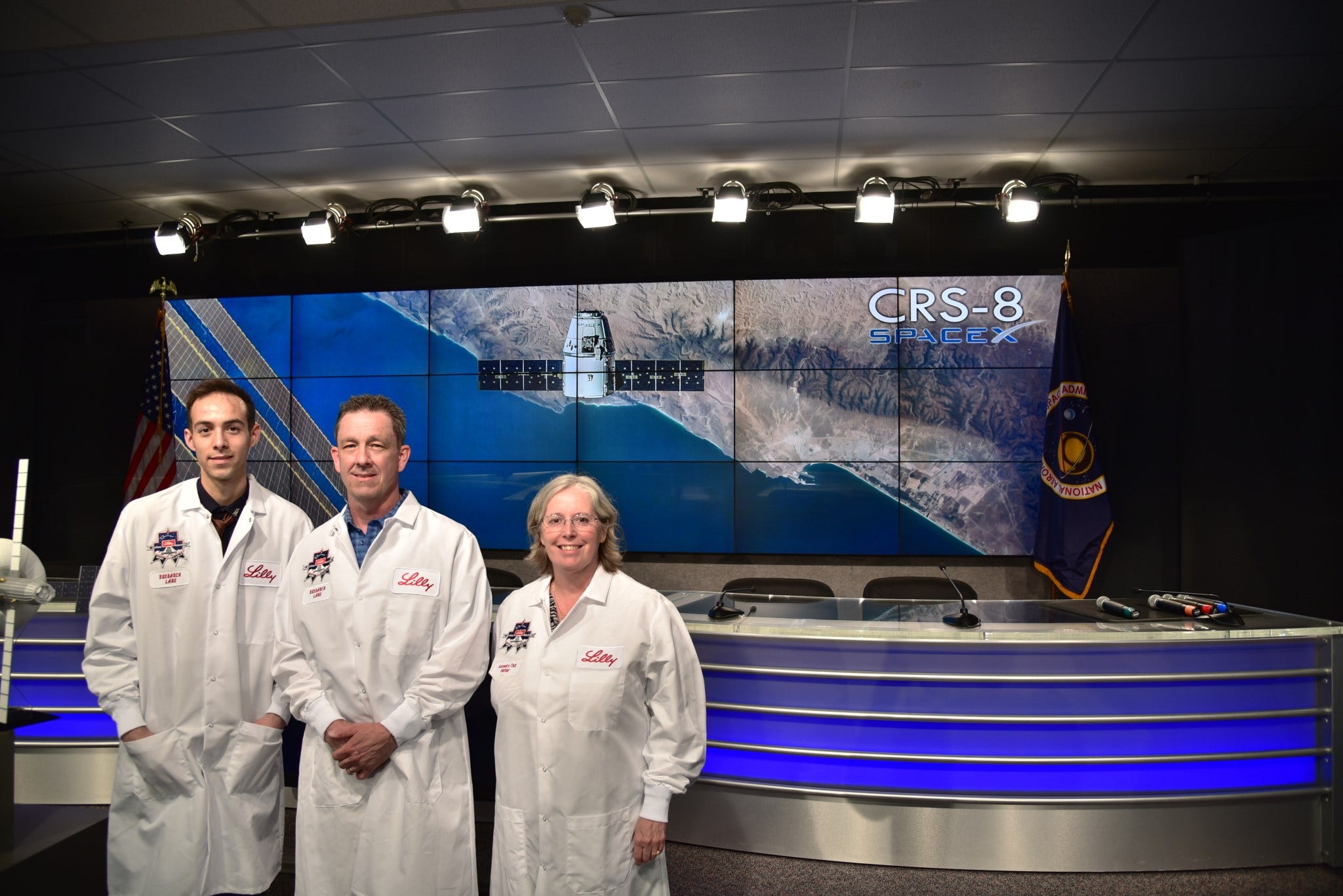Lilly Launches Space Research
 Lilly scientists (left to right) Kris Gonzalez-DeWhitt
Lilly scientists (left to right) Kris Gonzalez-DeWhitt
Subscriber Benefit
As a subscriber you can listen to articles at work, in the car, or while you work out. Subscribe NowScientists at Indianapolis-based Eli Lilly and Company are sorting through results from a lab that is, technically, out of this world. For the first time in its history, the pharmaceutical giant is conducting research in space that could speed drug development for patients on planet Earth. A key factor in space—the lack of gravity—could help uncover potential new treatments for cancer and diseases involving bone and muscle loss.
Lilly launched its first set of space experiments in April, bound for the International Space Station on board the SpaceX Falcon 9 rocket. Researchers are now finalizing experiments that will blast off in June. Lilly Clinical Innovation Advisor Dr. Ken Savin says the payloads involve two sets of experiments; the first takes aim at cancer targets that have been elusive on Earth.
“We’re taking proteins [to space] that are significant to us, because they might be possible targets for [cancer] drug products in the future,” says Savin. “We’re getting crystals made on the International Space Station; because of the zero gravity environment, you get much better, more defined crystals, and it allows us to get a better three-dimensional image of what those proteins look like. That helps us target the active part of that protein with products that we make.”
The second set of experiments involves an investigational product Lilly is developing that would encourage muscle growth. Savin says such a drug could help people with osteoporosis, muscular dystrophy or cancer, which sometimes causes muscle-wasting diseases to develop.
“We needed a place where we could test without the compounding factor of having the subjects working against gravity,” says Savin. “If we did a study on Earth with mice, they’re working constantly—just like you and I are—against gravity to walk and run. In the micro-gravity environment [of space], they don’t have that resistance, so you can really tell the product is working.”
While Lilly’s main focus is earthly patients, NASA researchers working to make long-term space travel possible are also interested in the results of the muscle-focused experiments. NASA says a mission to Mars—one of its biggest goals—would require eight months just to reach the planet, plus the duration astronauts would stay, followed by the eight-month trip back to Earth.
“Astronauts who spend long periods in space start to suffer from similar bone density issues like osteoporosis and muscle-wasting,” says Savin. “[Space] is a great place to study that. NASA wants to find ways to solve those types of problems if they’re going to be successful at long-term space travel.”
Savin notes Lilly’s “most innovative scientists” are working with the Center for the Advancement of Science in Space (CASIS) to design and develop the studies. The Lilly team spent time at the Johnson Space Center in Houston and the Kennedy Space Center in Florida preparing and loading the experiments for launch, which they got to watch in person.
The scientists had to train astronauts who will conduct the Lilly research once on the International Space Station. Part of the team will also visit Techshot in southern Indiana, one of Lilly’s partners, to watch live video of the experiments being conducted in space.
“It’s beyond our dreams. Even as kids, we all thought about space—we went into science because we were kind of geeky people, and then to be able to do it and be [at the space centers] was really surreal,” says Savin. “This is how we innovate as an organization. We look for situations where we can stretch ourselves and think in a way that is different than in the past, and this really forces you to.”
Conducting experiments in the final frontier won’t replace Lilly’s research on solid ground, but will provide clarity that can’t be found in Earth’s laboratories. While that comes at a high cost, Savin says “in the end, the results we’re getting are definitely going to be worth it.”
Savin says space research is an opportunity for Lilly to innovate and forge unique partnerships.
Savin says Lilly researchers are already brainstorming what they’ll study next in space.
Savin says space research is “very expensive.”
